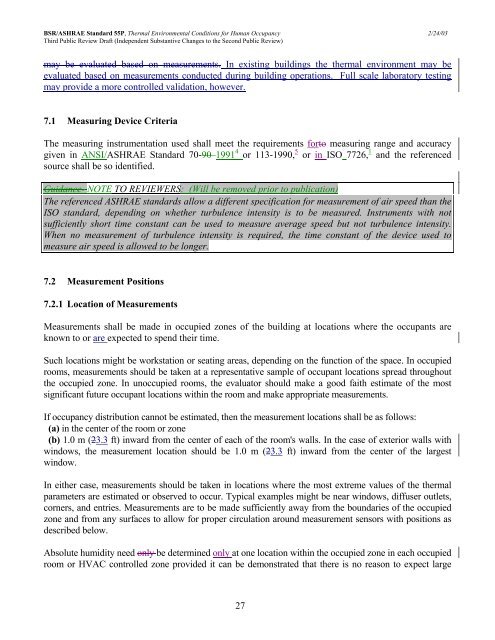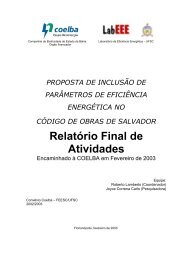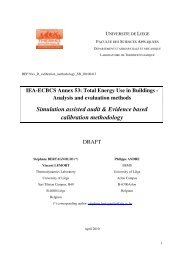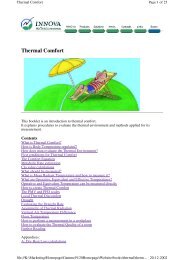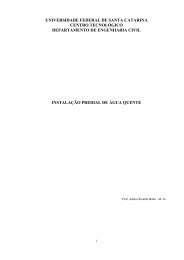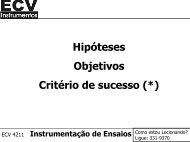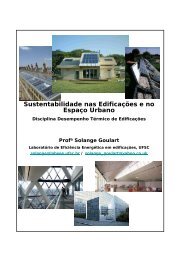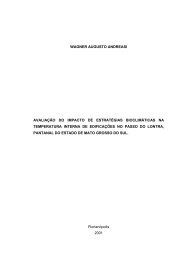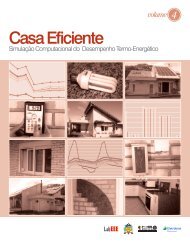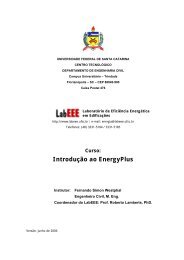ASHRAE STANDARD - 55R
ASHRAE STANDARD - 55R
ASHRAE STANDARD - 55R
Create successful ePaper yourself
Turn your PDF publications into a flip-book with our unique Google optimized e-Paper software.
BSR/<strong>ASHRAE</strong> Standard 55P, Thermal Environmental Conditions for Human Occupancy 2/24/03<br />
Third Public Review Draft (Independent Substantive Changes to the Second Public Review)<br />
may be evaluated based on measurements. In existing buildings the thermal environment may be<br />
evaluated based on measurements conducted during building operations. Full scale laboratory testing<br />
may provide a more controlled validation, however.<br />
7.1 Measuring Device Criteria<br />
The measuring instrumentation used shall meet the requirements forto measuring range and accuracy<br />
given in ANSI/<strong>ASHRAE</strong> Standard 70-90 1991 4 or 113-1990, 5 or in ISO 7726, 1 and the referenced<br />
source shall be so identified.<br />
Guidance- NOTE TO REVIEWERS: (Will be removed prior to publication)<br />
The referenced <strong>ASHRAE</strong> standards allow a different specification for measurement of air speed than the<br />
ISO standard, depending on whether turbulence intensity is to be measured. Instruments with not<br />
sufficiently short time constant can be used to measure average speed but not turbulence intensity.<br />
When no measurement of turbulence intensity is required, the time constant of the device used to<br />
measure air speed is allowed to be longer.<br />
7.2 Measurement Positions<br />
7.2.1 Location of Measurements<br />
Measurements shall be made in occupied zones of the building at locations where the occupants are<br />
known to or are expected to spend their time.<br />
Such locations might be workstation or seating areas, depending on the function of the space. In occupied<br />
rooms, measurements should be taken at a representative sample of occupant locations spread throughout<br />
the occupied zone. In unoccupied rooms, the evaluator should make a good faith estimate of the most<br />
significant future occupant locations within the room and make appropriate measurements.<br />
If occupancy distribution cannot be estimated, then the measurement locations shall be as follows:<br />
(a) in the center of the room or zone<br />
(b) 1.0 m (23.3 ft) inward from the center of each of the room's walls. In the case of exterior walls with<br />
windows, the measurement location should be 1.0 m (23.3 ft) inward from the center of the largest<br />
window.<br />
In either case, measurements should be taken in locations where the most extreme values of the thermal<br />
parameters are estimated or observed to occur. Typical examples might be near windows, diffuser outlets,<br />
corners, and entries. Measurements are to be made sufficiently away from the boundaries of the occupied<br />
zone and from any surfaces to allow for proper circulation around measurement sensors with positions as<br />
described below.<br />
Absolute humidity need only be determined only at one location within the occupied zone in each occupied<br />
room or HVAC controlled zone provided it can be demonstrated that there is no reason to expect large<br />
27


